WeChat Marketing: The Ultimate SME Guide to Winning in China’s Super App
Let’s be real—if you’re trying to enter China without WeChat marketing, you’re basically launching a brand with no phone number, no website, and no identity. That’s how essential this platform is.
Why WeChat Marketing Matters More Than Ever
If you’re serious about building your brand in China, WeChat marketing isn’t optional—it’s essential. You can think of it as China’s digital passport: without it, you’re invisible. WeChat isn’t just a chat app. It’s a super app, a content hub, a payment gateway, a CRM tool, and a mini-app store—all in one.
Let me hit you with a stat to set the tone: the average user opens WeChat over 20 times a day and spends nearly 2 hours daily inside the app. That’s not casual browsing. That’s habitual. And when people spend that much time on one platform, your brand needs to live there too.
Here’s where it gets interesting. WeChat isn’t like Instagram or TikTok where you’re screaming for attention in an endless scroll. It’s actually closer to Facebook Pages, where your brand has a dedicated home—an official account that can share content, send updates, and host built-in features like e-commerce, booking forms, or loyalty cards. It’s your owned media in a country where you can’t rely on Google or Meta.
Now, let’s talk real examples.
For one of our B2B clients—a global electronics component brand—we built a Service Account on WeChat. We also integrated a custom Mini Program that functions like a gated community for engineers and factory procurement teams. It includes:
- Technical specification sheets
- Use-case content for industrial scenarios
- Announcements for circuit design competitions
- Weekly Q&A sessions for product deep dives
The result? They’ve become known as the “go-to component expert” among Chinese engineers. The WeChat Mini Program now acts as a niche content hub—part branding, part lead-gen, and 100% sticky for the right audience.
Now switch gears: our B2C work. ➡️
We also manage the Official Account for a international hotel chain. Every month, we run membership day campaigns to boost bookings. We craft creative editorial content—think themes like “Where’s next?” or “Staycation stories that recharge your soul.” Each post includes hotel imagery, links to special offers, and creative storytelling that taps into local travel trends. We don’t just announce a new hotel—we turn it into a travel fantasy, delivered directly to subscribers’ WeChat inboxes.
That’s the power of WeChat marketing. You’re not competing in a noisy feed—you’re building a direct, lasting relationship with your audience. Whether you’re selling semiconductors or staycations, the platform adapts to your needs.
And the best part? Unlike platforms like Douyin, Weibo or Kuaishou , WeChat marketing is still undervalued, as they keep develope new tools/functions for WeChat, includes Q&A section, like “Reddit” or “Quora”. Content is more evergreen, SEO is more important and loyalty is far higher. You’re not just chasing clicks—you’re building a database of potential customers who have already raised their hands and opted in to hear from you.
In China, attention is fragmented, but loyalty lives on WeChat. If you want your brand to last, this is where you start.
WeChat Ecosystem Explained: Not Just Messaging, But a Marketing Engine
If you still think WeChat is “just a chat app,” I’ve got news for you—WeChat marketing is built on an ecosystem so advanced that calling it a messaging tool is like calling Amazon a bookstore. Yes, messaging is its origin. But what WeChat has evolved into is a full-scale digital infrastructure that can power everything from brand awareness and lead generation to customer loyalty and e-commerce transactions. It’s not just chat—it’s CRM, e-commerce, search engine, newsletter, and landing page all rolled into one.
Let me break it down for you.
The Core: Official Accounts, Mini Programs, Channels
The heart of WeChat marketing starts with your Official Account. This is your brand’s home base—think of it like a Facebook Page, but one people actually check. From this account, you can push content (like newsletters), send promotions, run campaigns, and interact with followers. There are two types:
- Subscription Accounts: Best for media, daily posts allowed
- Service Accounts: For businesses that want access to APIs, payment, CRM integration—with four posts per month but much more power under the hood
Then there’s the Mini Program—essentially your app within WeChat. You don’t need a separate website or app. You can host:
- Booking systems
- Loyalty programs
- Product catalogues
- Lead gen forms
- Content Hub
- Interactive tools
And all of this is instantly shareable via chat, social feeds, or QR codes. We’ve used Mini Programs for both B2C hotel bookings and B2B engineer communities.
WeChat also features WeChat Channels, which function like TikTok-style vertical video content but integrated into the WeChat feed. Great for pushing branded video content, influencer collaborations, or livestreams.
Discoverability: WeChat Search + Ask + AI
A major upgrade to the ecosystem in 2025 is the expansion of WeChat Search (搜一搜). This isn’t just a text box—it’s now a gateway that unifies WeChat’s entire ecosystem, including:
- Official Accounts
- Videos from Channels
- Mini Programs
- News articles
- AI-generated answers
Users get instant access to brand content, product reviews, how-tos, and even purchase options—all without leaving the app. And with the new AI assistant (Tencent Yuanbao), users now experience “search + suggestion + generation” in one intelligent flow. It understands user intent and pulls content from across WeChat to deliver real-time, context-aware responses.
For brands, this means you can finally compete on search intent inside a closed ecosystem. Imagine owning all the results for your niche—without ever needing Baidu or Google.
Content and Community: “Ask” and “Answer” via Wen Yi Wen(问一问)
WeChat’s “Wen Yi Wen” (问一问), or “Ask” platform, is its own internal Quora-style forum where users post questions and others answer based on expertise or experience.
Here’s the kicker: in 2024, WeChat overhauled the product and launched a revenue-sharing program for creators. Now, high-value answers rank prominently and come with monetisation. For brands, that means you can seed Q&A content about your products—like tutorials, how-tos, or comparisons—and dominate top-of-funnel awareness.
There’s even a Moderator role that Official Accounts can apply for. It gives brands the power to lead topic discussions and strengthen community engagement inside a more trusted, brand-safe setting.
Monetisation: The Rise of WeChat Shops
The final pillar is WeChat Shop (微信小店)—WeChat’s full-featured e-commerce platform. This isn’t just a shop; it’s a conversion powerhouse. In August 2024, the original Video Channel Shop was rebranded and upgraded to Xiaodian. New features include:
- Cross-platform product syncing between Official Accounts, Channels, Mini Programs, and even Moments
- Smarter attribution via unified store IDs
- In-chat gifting feature, launched in December 2024, where users can send gifts like WeChat Red Packets—only instead of cash, they’re sending your product wrapped in a digital “blue gift envelope”
This is huge for lifestyle and gifting-based categories. Imagine launching a candle brand, and users can send your candle like they’d send a sticker or emoji.
Bottom line: WeChat marketing is not a tactic—it’s a stack.
You don’t need a separate blog, app, YouTube channel, e-commerce site, or CRM. WeChat gives you all that under one roof. And thanks to its new AI tools, rich search ecosystem, and in-app commerce upgrades, it’s only getting more powerful.
If you’re an SME planning to grow in China, you don’t just want visibility—you want a system. That system is WeChat.
How B2B and B2C Brands Can Use WeChat Marketing Differently
One of the most common mistakes overseas brands make when entering China is assuming WeChat marketing works the same for B2B and B2C. Spoiler alert: it doesn’t. The platform is flexible enough to serve both models, but your execution strategy needs to be radically different.
For B2C Brands: Emotion First, Transaction Second
If you’re a B2C brand—let’s say skincare, F&B, or travel—you need to think of WeChat as your storytelling engine and loyalty loop.
Here’s how to win:
- Use Service Accounts to push visually rich, high-emotion content. Think: editorial-style posts with product inspiration, how-tos, or mini lifestyle magazines.
- Launch a Mini Program as your shopping portal, loyalty tracker, or booking engine.
- Run membership day campaigns or festive content that taps into seasonal behaviours. One of our hotel chain clients built a monthly content series called “Where to Next?” that blends staycation ideas with booking offers.
- Don’t forget WeChat Channels for video-based engagement and WeChat Shop for building shoppable journeys directly within chat.
It’s all about sparking desire, building habit, and staying top of mind in a crowded content environment.
For B2B Brands: Authority First, Relationship Always
Now let’s talk B2B—industrial goods, software, logistics, hardware, education. This is where WeChat becomes a credibility builder and client acquisition pipeline.
What works:
- Set up a Service Account that shares whitepapers, use cases, technical content, and thought leadership. Remember, buyers in China value expertise and long-term trust.
- Launch a Mini Program that acts as a technical resource hub. For one of our electronics clients, we integrated product spec sheets, component configurators, and even a digital forum for engineers. It became a go-to tool in their procurement process.
- Use WeCom (Enterprise WeChat) to manage client relationships, automate follow-ups, and centralise your BD activity.
Bonus tip: B2B decision-makers often overlap with personal WeChat users. That means your brand narrative needs to feel professional—but still human.
Whether you’re targeting skincare lovers or semiconductor engineers, WeChat marketing lets you meet them where they live digitally. Just don’t treat them the same—and you’ll be light-years ahead of your competition.
How to Set Up Your WeChat Marketing Strategy (Step-by-Step)
So, you’re convinced WeChat marketing is a must. Great. But where do you actually start? Let me walk you through a battle-tested, SME-friendly setup process that we use at Twish for both B2B and B2C clients.
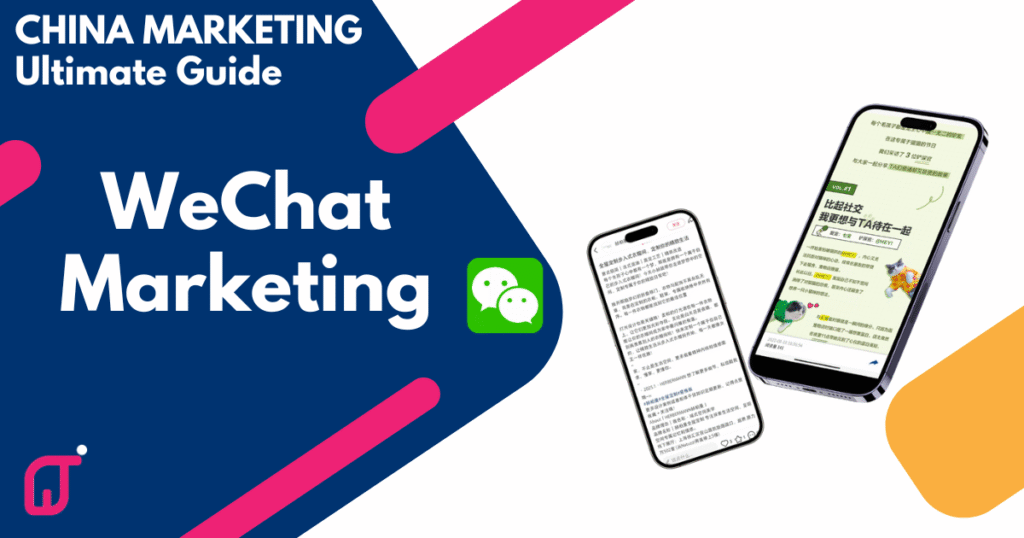
Step 1: Define Your Strategic Objective
Before touching a single button, ask yourself:
- Are you trying to drive direct sales?
- Build brand authority?
- Nurture long-term client relationships?
Your answer will shape everything—from the type of account you register to the kind of content you publish.
Example: A consumer lifestyle brand might focus on seasonal campaigns and loyalty-building content. A B2B supplier, on the other hand, may prioritise technical insights and gated lead magnets.
Step 2: Choose the Right Account Type
If you don’t have a Chinese business license, don’t worry. Twish can help you register via a local partner. Once inside the platform, choose between:
- Subscription Account: More frequent posts, less visibility. Ideal for media-style updates.
- Service Account: Limited to four pushes per month, but shows up in the user’s message list like a friend. Full API access, payment integration, and Mini Program linkage.
We almost always recommend Service Accounts for brands serious about long-term growth.
Step 3: Build Your Content & Funnel Framework
You’re not here to just post pretty pictures. You need a system. Here’s the basic blueprint:
- Top of funnel: Educational and value-driven posts
- Middle: Product features, testimonials, and event announcements
- Bottom: Promo campaigns, Mini Program CTAs, membership perks
Each content piece should have a goal—whether it’s to inform, convert, or re-engage.
Step 4: Link Up Your Mini Program / Xiaohongshu Account / WeChat Shop
Now let’s talk about where the real magic happens—integrating your digital assets directly into your WeChat ecosystem.
If your product or service benefits from interactivity—catalogues, forms, bookings, or gated content—a Mini Program is your best friend. It’s your app, your landing page, and your private sales assistant, all within WeChat. We helped one home service brand create a WeChat Mini Program where customers could explore renovation packages, book consultations, and even join a loyalty club. That’s not a funnel—it’s a full pipeline.
But Mini Programs aren’t the only option. Here’s how to decide what to link and why:
- Want to sell fast?
If speed is your priority and your brand is consumer-facing, activating WeChat Channels + WeChat Shop (微信小店) is your best move. You can create short-form product videos, link directly to your WeChat Shop, and let users purchase without ever leaving the app. For brands launching new products or running flash campaigns, this setup is extremely efficient. - Already have a Xiaohongshu presence?
If your brand is active on Xiaohongshu and has a flagship store there, you can link it directly in your WeChat menu bar (yes, that little tab that shows under your official account). This allows users to jump from WeChat into your Xiaohongshu content or store seamlessly—keeping your ecosystem connected and conversion-ready. - Want to build long-term user assets?
If your goal is to own your audience, drive repeat interactions, and reduce your dependency on third-party platforms (and their commissions), then the Mini Program is your DTC weapon of choice. You can customise experiences for different stages in the user journey—onboarding, upselling, loyalty rewards—and automate follow-ups without the risk of losing visibility through algorithm changes.
Bottom line: the right integration depends on your business goal. Whether you’re pushing high-velocity sales, deepening brand content journeys, or building your own customer data hub, WeChat gives you the tools to control the outcome.
Step 5: Drive Traffic—The Smart Way
Use WeChat QR codes across:
- Your website
- Packaging
- activity/campaign materials
- Brochure
Pair that with offline events or KOL-led campaigns to build subscribers quickly. Get this setup right, and you’re not just doing WeChat marketing. You’re building a full-funnel, always-on ecosystem that works while you sleep.
If you are interested in our service, here you can know the full picture of it: Twish’s China Social Media Services
What Kind of Content Works on WeChat? Think “Useful Meets Personal”
When it comes to WeChat marketing, content isn’t king—usefulness is. If you’re used to cranking out content for Instagram or LinkedIn, you’ll need to unlearn some habits. WeChat users aren’t browsing for entertainment. They’re scanning for relevance, value, and trust.
So how do you create content that lands?
1. Focus on Solving, Not Selling
The most shared content on WeChat doesn’t shout “Buy now!” It says:
- “Here’s how to fix that problem.”
- “This is what to pack for your weekend trip.”
- “What engineers need to know about the latest battery module.”
Whether B2B or B2C, content that educates and resonates always performs better than hard-sell promos.
For example, one of our clients in the home living space created a WeChat series around “How to Choose the Right Sofa for Your Living Style”. Not only did it drive massive saves and shares, it also doubled WeChat store conversions that month—because readers felt helped, not hustled.
2. Build Series, Not One-Offs
The most effective brands treat WeChat like a magazine, not a flyer. That means publishing in series:
Travel brand? Do “A History City Guides.”
Beauty brand? Launch “Skincare Myth Mondays.”
Engineering firm? Share weekly use-case breakdowns.
This approach builds anticipation and subscriber stickiness.
3. Personal Tone Wins
You’re not writing to the masses. You’re speaking to one person, directly in their message inbox. Write like it. Use warm intros, clean visuals, skimmable sections, and real-world voice. No corporate fluff.
We once helped a hotel group shift from generic announcements to editorial-style posts titled “Escape Plans for Rainy Weekends” and “The Best Rooms for Doing Absolutely Nothing.” CTRs tripled.
4. Localise Like You Mean It
This is where Western brands often fall flat. Copying your Facebook post into Chinese won’t cut it. You need to:
- Adapt cultural references (no Thanksgiving campaigns unless you explain them)
- Shift tone from “funny” to “relatable” (Chinese audiences value trust over viral)
- Be careful with directness—soft sells often outperform blunt CTAs
Twish always recommends building local content pillars first, then translating ideas, not just language.
5. Don’t Copy Your Instagram Playbook
We get it—you’ve got a great carousel post or viral Reel. But WeChat isn’t built for snackable scrolls. It’s made for:
- Long-form value content
- Series-based storytelling
- Contextual interactions like menu clicks and Mini Program deep dives
Brands that rely on only images, hashtags, and emojis (like they would on Instagram) often fail to engage. Users on WeChat expect depth, not just aesthetics.
4. CTA = Clear, Not Pushy
At the end of each article, use one clean call-to-action:
- “Book your next Chill ”
- “Explore the collection”
- “Chat with our advisor”
No spammy links. No overwhelming buttons. Just one action that feels natural.
Content on WeChat is less about performance marketing and more about performance storytelling. Be useful, be consistent, and sound like a human. Do that, and you’ll build an audience that doesn’t just read—they trust and return.
WeChat Advertising: Paid Options That Actually Work for SMEs
Let’s get one thing straight: WeChat advertising is not just for massive corporations with million-yuan budgets. In fact, for small and midsize brands, it can be one of the most cost-effective and precisely targeted tools in the China digital toolbox—if you use it right.
WeChat doesn’t just offer “boosted posts.” It provides a full range of ad formats designed to fit different business goals, industry verticals, and funnel stages. Here’s a breakdown of the key formats and how SMEs can use them strategically.
1. Moments Ads (朋友圈广告)
These ads appear directly in users’ social feeds, designed to mimic personal posts from friends. Think: an image, a headline, and a short caption—just like your best friend recommending a new skincare routine. This ad format is ideal for:
- Brand awareness campaigns
- Public account follower growth
- App downloads
- Coupon promotions
- Local store pushes
For example, luxury brands often use Moments Ads to build aspiration and target high-net-worth individuals. But for SMEs, it’s a great way to build buzz around product launches or events, especially when you want to tap into users’ relationship networks.
2. Official Account Ads (公众号广告)
These are the banner, card, or video ads placed within articles published by other WeChat Official Accounts. Perfect for:
- Educational content placement
- Driving traffic to your own Official Account
- Pushing service sign-ups
Industries like education, healthcare, and professional services thrive here, as these ads allow you to embed value-added content in the middle of trusted posts. Trust-building? Done.
3. Mini Program Ads (小程序广告)
Highly interactive and integrated into WeChat’s mini ecosystem, Mini Program Ads are ideal for ecommerce. With algorithmic targeting, low CPA, and built-in CTA functionality, they’re especially useful for:
- Product sampling
- Flash sales
- Coupon redemption
A case in point: Florence Village Chengdu used Mini Program Ads to push out instant coupons and saw a sharp increase in both click-through rates and in-store traffic.
4. Channels Ads (视频号广告)
WeChat Channels, the app’s short video platform, supports native ad formats across feed placements and Moments-like integrations. These are a goldmine for:
- Product launches
- Local promotions
- Story-driven campaigns
Use this if your brand leans visual—F&B, fashion, auto, lifestyle. Video brings emotion and trust, especially if paired with influencer storytelling.
5. Rewarded Ads (激励广告)
These offer incentives to users who complete a task (like watching a video or playing a game). A perfect fit for the gaming industry, they also work for entertainment, apps, or interactive education tools. It’s low-cost, high-attention, and sticky as hell.
6. Card & Coupon Ads (卡券广告)
These work wonders for retail, F&B, and local services! Think of them like a digital flyer but way more trackable. You push a discount or free trial card via targeted Moments or Mini Program placements, and users redeem online or in-store. Great for promos or holiday bursts.
7. Brand Zone Ads (品牌专区)
This is your full-page digital showroom. Brands can use this ad type to showcase lifestyle content, testimonials, product features, and more. Ideal for luxury and lifestyle brands wanting to make a polished first impression.
8. WeChat Search Ads (搜一搜广告)
Search Ads appear when users enter specific keywords into WeChat’s search bar. If someone types “gluten-free snacks” or “summer staycation deals,” and you show up—boom, hot lead. Use this format if you want to capture high-intent traffic.
9. Banner Ads (横幅广告)
Placed at the bottom of WeChat articles, these are affordable and effective. Ideal for SMEs, Banner Ads can link to a product page, event registration, or WeChat Mini Program. They may be subtle, but they convert like crazy when placed strategically, especially for Education industry.
10. Interactive Ads (互动广告)
Think lucky draws, mini surveys, or embedded games. These are brilliant for brands that want engagement and data collection. Particularly strong in the gaming, lifestyle, and youth-targeted verticals.
Why SMEs Should Care About WeChat Ads
If you’re wondering whether these ad formats are overkill for a small brand, the answer is: not at all. Here’s why:
- Precision Targeting: Gender, age, location, interests—you name it, WeChat supports it.
- Cost Efficiency: You can start testing with just a few thousand RMB. No need for giant TV-style budgets.
- Diverse Objectives: Whether you want traffic, downloads, form fills, or in-store redemptions, there’s an ad format built for that.
- Better ROI: Because WeChat users are sticky, and content feels native, ad fatigue is lower and conversions are higher.
- Data-Driven Optimisation: WeChat’s backend analytics let you track everything—clicks, conversions, cost-per-lead—and refine accordingly.
At Twish, we’ve helped brands run conversion-focused campaigns using just a combo of banner ads, Moments ads, and Mini Program retargeting.
The key isn’t to run every type of ad—it’s to choose the right combo for your audience, industry, and budget.
Real-world example: A women’s footwear brand used a ¥20,000 WeChat advertising budget to promote their brand and campaigns to over 100,000 targeted users. The campaign is estimated to have generated hundreds of thousands of RMB in conversion revenue through ad-driven traffic.
Looking for a combined marketing package for both Xiaohongshu + WeChat to create a healthy sales loop online? Check out our services, starting from $2000/month
KOLs on WeChat: Are Influencers Still Worth It?
Short answer? Absolutely.
WeChat remains one of the most powerful and underutilised platforms for influencer marketing in China—especially for brands who want to build long-term credibility, deep user trust, and high conversion across niche audiences.
Let’s break down why WeChat marketing with KOLs still works, and how to do it the smart way.
Why WeChat Is Ideal for KOL Marketing
1. High trust, low noise
Unlike other platforms where sponsored content floods every feed, WeChat’s closed ecosystem makes each KOL post feel intentional. Content sent via public accounts or shared in Moments (朋友圈) carries a peer-to-peer credibility. According to studies, 49% of Chinese consumers have made purchases based on KOL recommendations, with an even higher rate among Gen Z and millennials.
2. Precise targeting via niche voices
WeChat influencers (especially in verticals like beauty, parenting, fashion, and health) typically maintain strong influence in tight-knit communities. Their recommendations don’t feel like ads—they feel like trusted advice from a respected insider.
3. Versatile content formats
Whether it’s long-form storytelling via public account articles, native video reviews, or livestreams tied to Mini Programs, WeChat offers full-funnel flexibility. You can combine KOL posts with direct Mini Program jumps, coupon drops, or group community activations.
4. It’s interactive—and measurable
Influencers can embed links, drive traffic, and get real-time feedback from WeChat’s CRM tools. For example, a beauty brand partnered with a top skincare blogger to publish a multi-format campaign across WeChat Moments, livestreams, and mini articles. The result? A measurable boost in product page visits, sales, and even WeChat Shop wishlist adds.
5. It works even with modest budgets
Successful Case Examples
Vipshop (唯品会) collaborated with lifestyle KOLs to publish native-style “product seeding” articles that funneled directly into Mini Programs. With a minimum investment of ¥100,000, ROI exceeded 1.0, with 90% of purchases happening via links in the KOL content itself.
A beauty brand partnered with a known skincare influencer to push content via Official Accounts and livestreams. Their product sold out twice in one week following a series of honest, instructional skincare breakdowns and Q&A sessions.
How to Choose the Right WeChat KOL
- Match the tone: A luxury fragrance brand should avoid comedic vloggers. Match energy with brand voice.
- Look at the content format: If you’re running a WeChat newsletter-style campaign, you need a public account operator—not just a video creator.
- Go beyond follower count: Engagement rate, community loyalty, and content relevance > vanity metrics.
- Consider KOC: In WeChat’s “friend-heavy” ecosystem, Key Opinion Consumers often outperform big-name influencers, especially for local services or niche B2B categories.
How Does WeChat KOL Marketing Compare?
| Platform | Core Use Case | KOL Format Strength | Best For | Weakness |
|---|---|---|---|---|
| Social CRM + DTC | Long-form, newsletter, KOC | High-trust content, repeat sales | Expensive top placements | |
| Xiaohongshu | Lifestyle discovery | Visual, review-based, UGC | Beauty, fashion, home goods | High UGC quality demands |
| Douyin | Viral entertainment | Short video, livestream | F&B, consumer electronics | Low retention after exposure |
| Trending topics | Stars, macro-KOLs | Fast exposure | Weak retention, noisy ecosystem |
If you’re a global brand trying to build credibility, convert users, and nurture private traffic, few platforms offer the depth, control, and ROI potential of WeChat.
At Twish, we help clients navigate the nuance—matching the right influencers to your funnel, optimising formats, and integrating KOL content with paid advertising and CRM systems.
Pro tip: KOC (Key Opinion Consumers) + Employee Advocacy = untapped goldmine
WeChat CRM: The Secret Weapon for Retention and Lead Nurturing
In Western marketing, CRM often feels like an afterthought—something you build after you’ve scaled. But in WeChat marketing, CRM is your growth engine from day one.
Here’s why: WeChat isn’t just a channel. It’s your entire digital infrastructure—from first impression to lifelong loyalty. And that journey is held together by one of the most underrated tools in China digital marketing: WeChat CRM.
What Is WeChat CRM?
WeChat CRM refers to the combination of tools—mostly within WeCom (Enterprise WeChat), Mini Programs, and Official Account backends—that allows brands to:
- Capture leads
- Tag and segment users
- Push personalised content
- Automate follow-ups
- Build private sales funnels and group communities
It’s like having HubSpot, Mailchimp, and your top three salespeople—all inside one app your customers already use every day.
At Twish, we’ve execute WeChat CRM operation and help to design CRM system on Mini program for everyone from boutique B2C brands to global B2B suppliers. And here’s what we’ve learned: when done right, this is where your conversion rate doubles—and your acquisition cost halves.
Why WeChat CRM Works So Well
- You own the user relationship
Unlike TikTok or Xiaohongshu, where followers belong to the platform, WeChat gives you direct access to each follower—through push messages, menu navigation, or even one-on-one chat. - Zero friction
No app switching. No emails. No browser tabs. You engage users where they already spend 2+ hours a day. - Trust and intimacy
Users trust content delivered through WeChat more than any other channel. You’re in their inbox, not their feed. That makes every message feel personal—not pushy. - Full-funnel tagging and segmentation
You can assign labels to users based on behavior (e.g. clicked link, purchased, joined live session), then send tailored content journeys based on those tags. That’s personalised marketing at scale.
B2B and B2C CRM Use Cases on WeChat
For B2B brands, WeChat CRM becomes a full pipeline manager:
An industrial software brand we worked with used WeCom to tag prospects from different cities and job functions. Then, it triggered automated follow-ups (demos, specs, case studies) based on interest.
The result? Shorter sales cycles and way higher response rates than cold emails.
For B2C brands, it’s about nurturing and reactivation:
One skincare brand we support runs onboarding sequences for first-time Mini Program buyers. After tagging the customer by product interest, the system drip-feeds skincare tips, user stories, and exclusive VIP offers over a 10-day period.
The retention rate of these users is 3x higher than non-tagged buyers.
How It All Ties Together
Imagine this journey:
- A user clicks your Moments ad or They scan the QR code in a offline activity
- Follows your Official Account
- Joins a Mini Program giveaway
- Gets tagged as “high-interest”
- Receives a personalised WeCom message with a discount
- Converts. Then gets invited to a customer-only WeChat group
- Becomes a repeat customer through loyalty content + member days
- That’s not a campaign. That’s a CRM-driven revenue machine.
Key Tools to Build WeChat CRM
WeCom (Enterprise WeChat): Best for one-to-one sales, internal collaboration, tagging, and lead scoring. Think of it as WhatsApp + Salesforce.
Mini Programs: Collect user data, trigger actions based on clicks, purchases, and behaviors.
Official Account backend: Manage push content, menus, and follower insights.
SCRM tools like QianFan or JINGdigital: Add layers like automation, A/B testing, and dashboards.
WeChat CRM is not optional—especially if you’re an SME in China. It’s what separates flash-in-the-pan campaigns from long-term, high-ROI brand systems.
Done well, it helps you:
- Lower CAC
- Increase LTV
- Boost referral and retention
And build your own “traffic moat” in an increasingly noisy market
FAQ: WeChat Marketing for International SMEs
Is WeChat Marketing Worth It?
Absolutely. If Xiaohongshu is your awareness engine, WeChat is your loyalty machine. It’s where your brand nurtures, educates, and retains customers long after they click “follow.” For Western SMEs serious about playing the long game in China, WeChat marketing isn’t optional—it’s foundational.
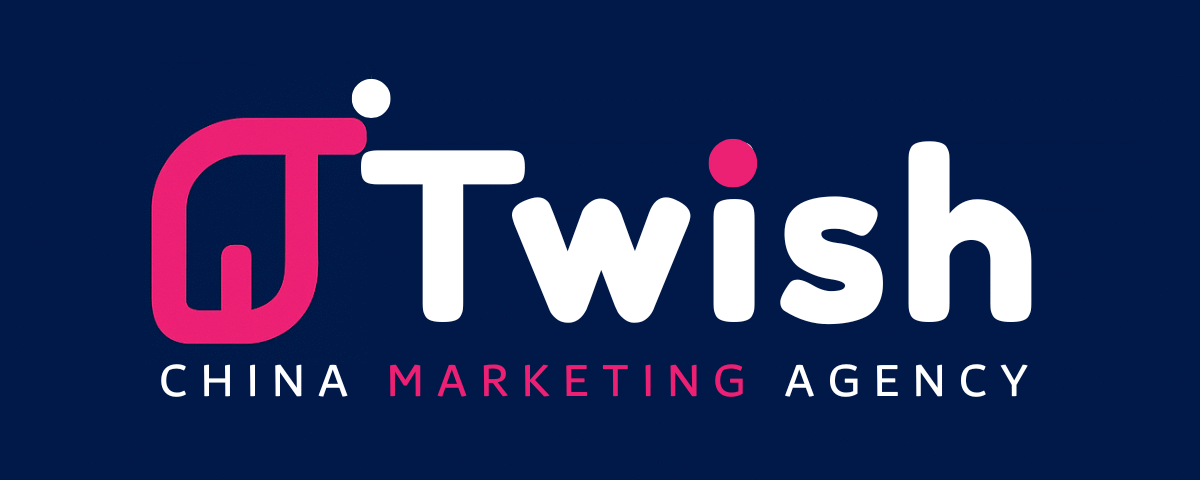


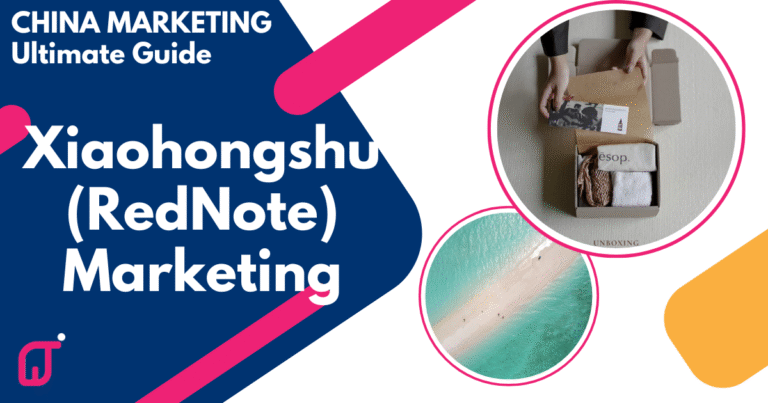
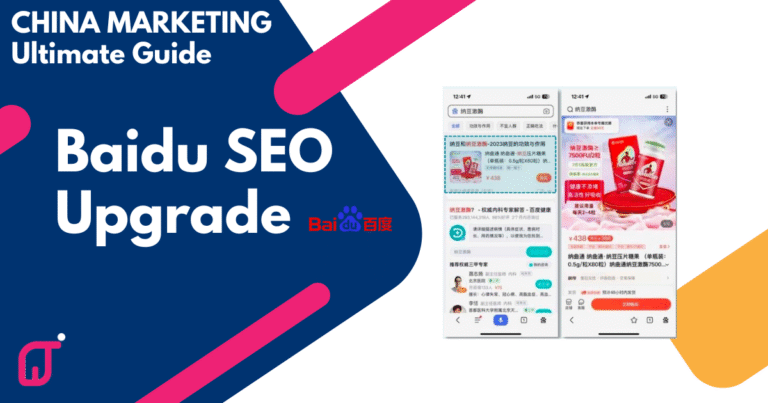
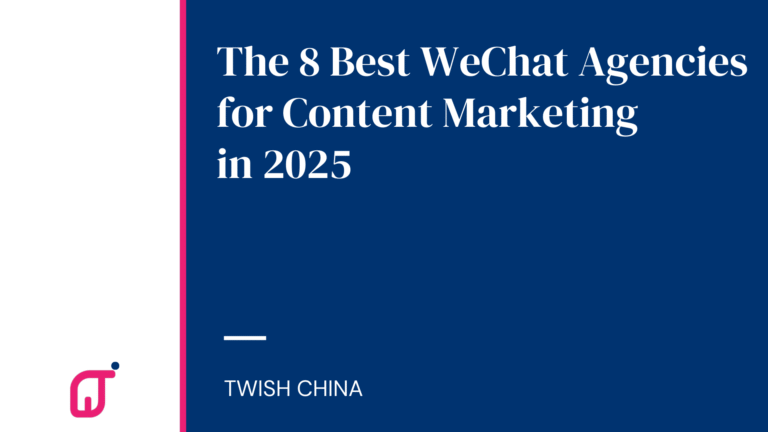
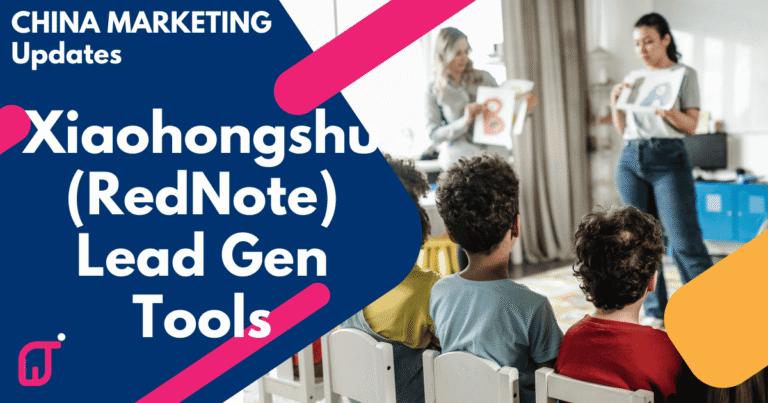
One Comment